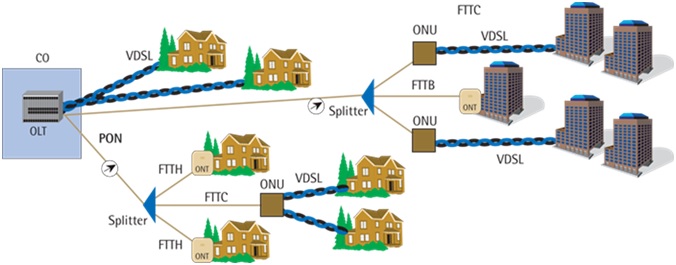Same way as the Cable TV distribution networks were initially built on a Coaxial Cable and later upgraded to HFC Hybrid fiber-Coaxial distribution plants, it won’t take much of an effort to now build an IP Multicast Gigabyte HFCE Hybrid Fiber-Coaxial – Ethernet Distribution plants, that are inherent bi-directional and can easily carry Voice, Video, Data and various value added services “VAS” on these NGNs built and operated.

*VNO – A Virtual Network Operator – is a provider of management services and a reseller of network services like voice, video, data and VAS “Value Added Services” of other telecommunications service providers, that does not own the telecommunication network infrastructure
The recent recommendation by (TRAI) to implement Virtual Network Operator (VNO) is welcome news to the telecom industry that is facing innumerable challenges. Thanks to the diverse geography of the country, operators have long faced issues creating a profitable business model out of their telecom investments. Be it spectrum licensing or telecom equipment or fiber investments.
India, now on the verge of next wave of digital revolution thanks to initiatives like Digital India and 100 Smart Cities by the ambitious BJP led Modi government at the Centre, needs a revolutionary telecom policy that generously involves the participation of industry stakeholders of all types- both big and small.
As per TRAI recommendation, a VNO will be able to deliver any type of telecom services – including home telephony, broadband and OTT services like messaging, Voice over Internet Protocol (VoIP) and Internet Protocol Television (IPTV) – under a new Unified Licensing (UL) regime. The new UL model is expected to override some of the prohibitive licensing model existing within the country.
The Next Generation Network deployment under VNO using the existing PSUs BSNL and MTNL infrastructure to roll out Quad play service
- Multimedia
- High Speed Mobile Broadband
- Live Channels / Videos
- Video Conferencing etc.
- E-Commerce, Banking, Distant Education, E- Governance
- Wi-Fi – connectivity to Smart Phones, Tablets, IP Surveillance Cameras, STBs, Smart Meters.
What is in it for the BSNL | MTNL?
- Increase Network Utilization
- Increase Revenue from all commercial services including Content, VAS & Advertisements.
- Increases Urban Mobility & Rural Markets enabling rural e-commerce and e-Governance
